Welcome to New Life Rockeries
Stone Retaining Wall: How to Build a Retention Wall With the Help of Your Local Experts
Stone Retaining Wall: How to Build a Retention Wall With the Help of Your Local Experts
Request a Quote
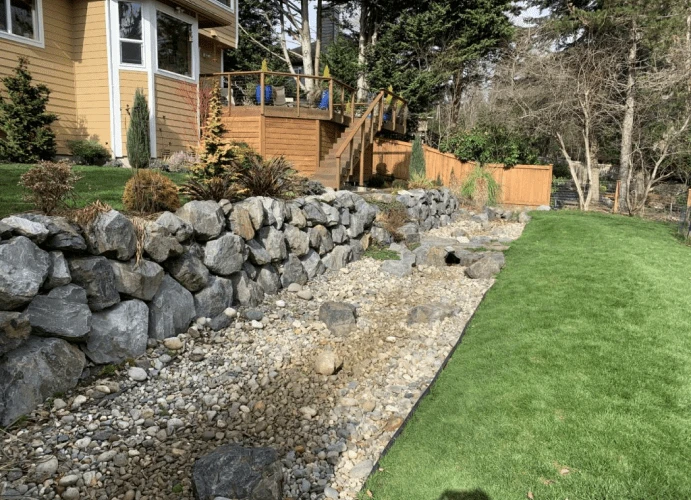
Whether you’re looking to add a decorative extension to your home, want to build up your garden beds, or just would like to update existing concrete versions, a stone retaining wall can really take your home’s appearance from zero to hero.
This form of natural material keeps your home looking rustic and rugged while also giving it a certain pzazz that your neighbors would die for.
At New Life Rockeries, we pride ourselves in building the highest quality stone retaining walls the Pacific Northwest has ever seen. We have hundreds of happy clients, all with retaining walls that not only look fantastic but are also designed to stand the test of time. For more information about our services and how we can help take your dream from concept to reality, give us a call today!
Testimonials
Absolutely fantastic.
We had the New Life team replace our failing retaining wall, build steps from our front to back yard, and create an area for a fire pit.
Despite torrential rain during the project, they stabilized our wall and completed the work with surgical precision.
Our neighbors were also really happy with the transformation.
They replaced an ugly, rotten wall with a beautiful terraced one —in terrible weather—and stayed on budget doing so.
They were so easy to work with, and we are so happy with the result.
Thank you!!
New Life Rockeries was so easy to work with on every step of the process.
They heard our hopes and goals, provided awesome professional feedback to make it even better than we imagined, and got the job done!
They started sooner than we expected, were extremely detail-focused (since I'm working from home, I'd spy a little and was impressed by how they would take the time to get each stone perfect), and they came in under budget!
This was not a small project either—they:
- Leveled a weird hill we had
- Moved an old rock wall
- Built a new rock wall with the old stones in another part of the yard
- Constructed a beautiful new patio and retaining wall with a built-in bench
Can't recommend them enough and will definitely get more projects done by them in the future!
In the photos, you’ll see a concrete wall—that ugly thing was NOT their work. It’s getting covered by a fence that will sit on top of the lovely wall New Life built.
We loved working with the team.
They listened to our concerns, addressed landscape issues, provided reasonable solutions that worked, and delivered excellent work.
The team was meticulous and conscientious of our neighbors. They allowed us to expand on the project, finding what worked best.
Clean-up every day was part of their routine, and we were kept informed every step of the way.
We absolutely love our new patio areas, rockeries, landscape, and drainage solutions. We now have a very livable and workable space!
We would hire them again.




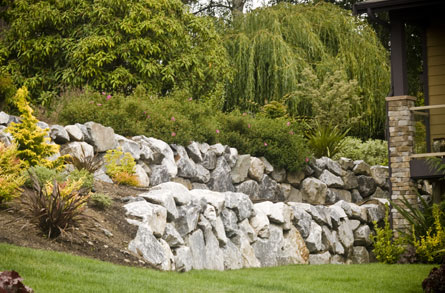
Why Choose a Natural Stone Retaining Wall
Building a wall with stone with retaining wall contractors. Practically speaking, these types of walls help hinder erosion, hold back soil, and even expand the amount of usable space on your property. But, we all know that we’re not always focused on just the practical when it comes to our homes…
Building retaining walls made of stone is also about aesthetic. They look fantastic. When it comes to stone walls, there are almost no looks or retaining wall designs that can’t be created! At New Life Rockeries, we source our stones, rocks, and boulders from local quarries, allowing us to find a material that you love, all while reducing our carbon footprint along the way.
And, if all of the above isn’t enough, stone walls require little maintenance compared to other materials.
The Importance of Working With Experts
While building retaining walls with stone may seem like a fantastic idea, they’re not that straight forward to install. There are various considerations you need to keep in mind if you want to build a wall that truly stands the test of time.
Whether you’re working with flat rocks, boulders, or any other type of stones, you should always consult with an expert before starting your project. Here are just a few of the reasons working with an expert is essential when building stone retaining walls:

Longevity
With a little TLC, retaining walls are designed to last a long time. There is no reason for your retaining wall to start crumbling within just a few years of building it, unless it wasn’t built correctly. So, with that in mind, can you confidently say that your stone retaining wall will last as long as you want it to?
With a little TLC, retaining walls are designed to last a long time. There is no reason for your retaining wall to start crumbling within just a few years of building it, unless it wasn’t built correctly. So, with that in mind, can you confidently say that your stone retaining wall will last as long as you want it to?
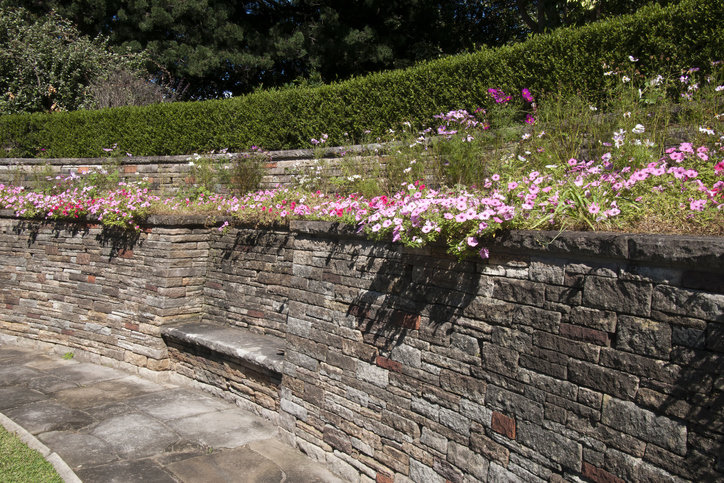
Codes & Regulations
Regardless of the type of stone retention wall you want to build, you need to know the local codes and regulations before you can start the work. It doesn’t matter if you plan on building a wall two inches tall or five feet high, you’re going to need permission from the local authorities.
Working with a local company like New Life Rockeries allows you to sit back and relax while we maneuver all of the paperwork and legalities. Our team can tell you the exact type of licensing you need to create your stone wall so that you can feel 100% confident in your home if anyone comes knocking.
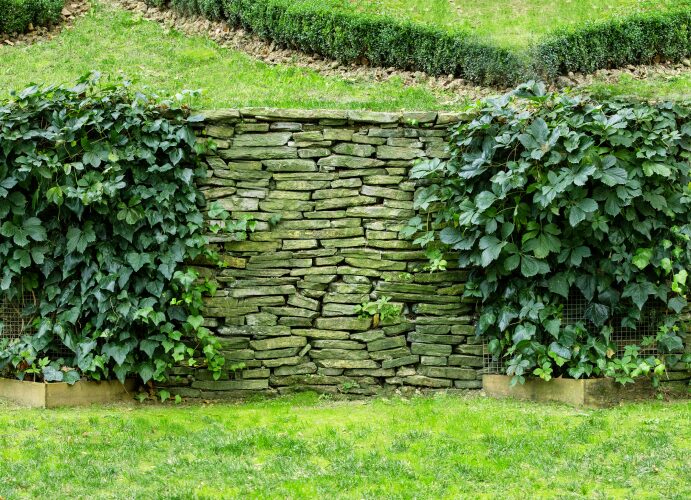
Quality Control
Whether it’s your first wall, second wall, or you’ve never built one before, it can be difficult to know if you’ve done everything correctly if you’re going at it alone. Quality control is essential during every step of a build and one person can rarely keep an eye on every single element of a project.
Hiring a local landscaping and hardscaping company gives you access to a highly qualified team of experts, all ready to check each other’s work over and over to ensure that you are left with a natural stone retaining wall that you know will last you a lifetime. This leads us to our next point…

Longevity
With a little TLC, retaining walls are designed to last a long time. There is no reason for your retaining wall to start crumbling within just a few years of building it, unless it wasn’t built correctly. So, with that in mind, can you confidently say that your stone retaining wall will last as long as you want it to?
With a little TLC, retaining walls are designed to last a long time. There is no reason for your retaining wall to start crumbling within just a few years of building it, unless it wasn’t built correctly. So, with that in mind, can you confidently say that your stone retaining wall will last as long as you want it to?

Codes & Regulations
Regardless of the type of stone retention wall you want to build, you need to know the local codes and regulations before you can start the work. It doesn’t matter if you plan on building a wall two inches tall or five feet high, you’re going to need permission from the local authorities.
Working with a local company like New Life Rockeries allows you to sit back and relax while we maneuver all of the paperwork and legalities. Our team can tell you the exact type of licensing you need to create your stone wall so that you can feel 100% confident in your home if anyone comes knocking.

Quality Control
Whether it’s your first wall, second wall, or you’ve never built one before, it can be difficult to know if you’ve done everything correctly if you’re going at it alone. Quality control is essential during every step of a build and one person can rarely keep an eye on every single element of a project.
Hiring a local landscaping and hardscaping company gives you access to a highly qualified team of experts, all ready to check each other’s work over and over to ensure that you are left with a natural stone retaining wall that you know will last you a lifetime. This leads us to our next point…

How to Build a Stone Retaining Wall
While building a DIY stone retaining wall may seem like a good idea, it is a lot of work. Additionally, if you do not have prior experience building these types of walls, you may find yourself facing some serious obstacles along the way. These can cost you both time and money, and you won’t be sure that your wall will have the longevity of a professionally built one.
At New Life Rockeries, we take great pride in building stone retaining walls that our clients love. Whether you want flat stones, natural stone, or have any other material in mind, we’re here to help! Above all, we’ll assure your wall’s integrity all while reducing labor costs as much as possible to keep your stone retaining wall within budget. Call us today to find out more about how we can help you!
In the meantime, here are the steps we take when building stone retaining walls:
We Identify the Right Height to Base Ratio
Whether you want a short stone retaining wall or a tall one, the first step we take is to identify the right height to base ratio. This is also the time at which we make a final decision on the total wall height.
Typically, we make the base slightly thicker than the height of the wall. This means that if you would like your wall to be three feet tall, the base would be ever so slightly wider. Thanks to our skilled team of contractors, we are still able to maintain a thin base as we have the expertise to precisely place the stones in the back to support the structure of the wall.
Remember to consider all locations for your stone retaining wall. While you may only be considering one place for it, moving it ever so slightly could help you save materials. As your local experts, we will provide you with a list of options and eventualities as well as a quote for the wall you have in mind so that you go into your construction with your eyes wide open.
We Slope Your Wall Backward
To prevent wall failure, you need to dig up the foundation correctly and lay the stones in such a way that they slope towards the back of the wall. This will ensure that the wall holds up against the pressure of the backfill. As a rule of thumb, we tend to create an approximate to inch drop for every square foot of height.
We Prepare a Level Trench
So the time has come to build your stone retaining wall…
The first course that we have to think of is the foundation. And, for the foundation to go in, we go ahead and prepare the trench.
The trenches we build typically range from six inches to a foot deep, although we typically just ensure that it is deep enough for the base course and first course. We also incline it backwards to ensure that the wall can continue to withstand the pressure. During this stage, we work towards making the surface of the trench even so that the stones can lay flat with no space to move around. This level ground can be achieved by using a square spade and a line level.
We Choose the Materials for Your Foundation
Once we have created a level trench using a square spade and line level, it’s time to choose the materials for the foundation of your natural stone retaining wall. Here, we usually use gravel, crushed stone, or clay depending on the area in which we are building the wall. Below, we break down the benefits of each so that you can have a better idea of why we choose the materials that we do:
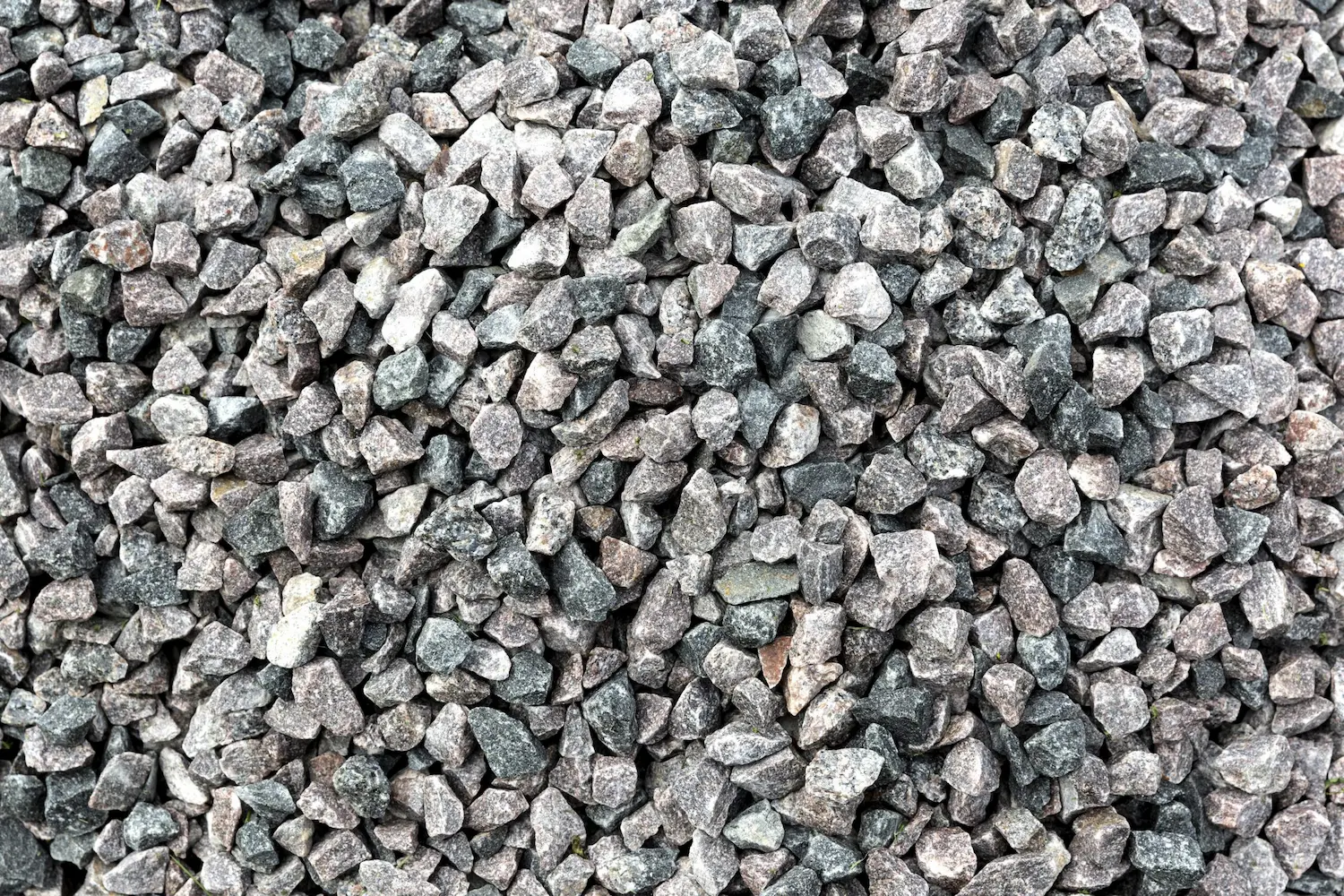
Gravel
Looking for a good option for water drainage? Gravel is your best bet! Gravel leaves large gaps that allows for better drainage, preventing the wall from moving. The key to laying down gravel is to spread it evenly before compacting it with a jumping jack or vibrating plate compactor. We will be sure to avoid directing your drainage system towards your house to prevent damage.
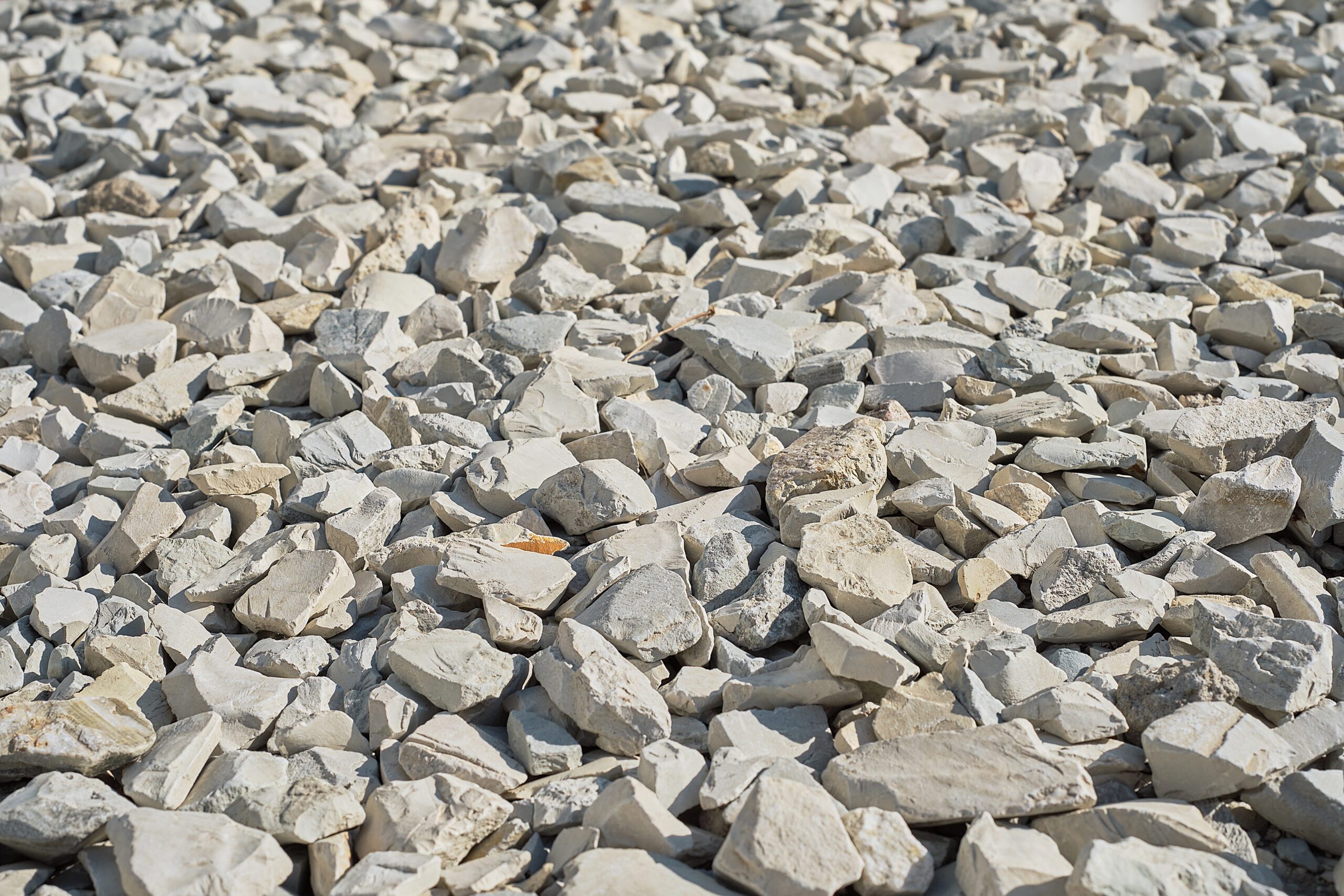
Crushed Stone
At New Life Rockeries, we often use crushed stone rather than gravel or concrete because, despite being a little more expensive, it requires less compacting and provides better drainage. Typically, the crushed stones we use are between half an inch and three quarters of an inch because they are better suited for the freeze and thaw cycles the Pacific Northwest experiences during the winter months.
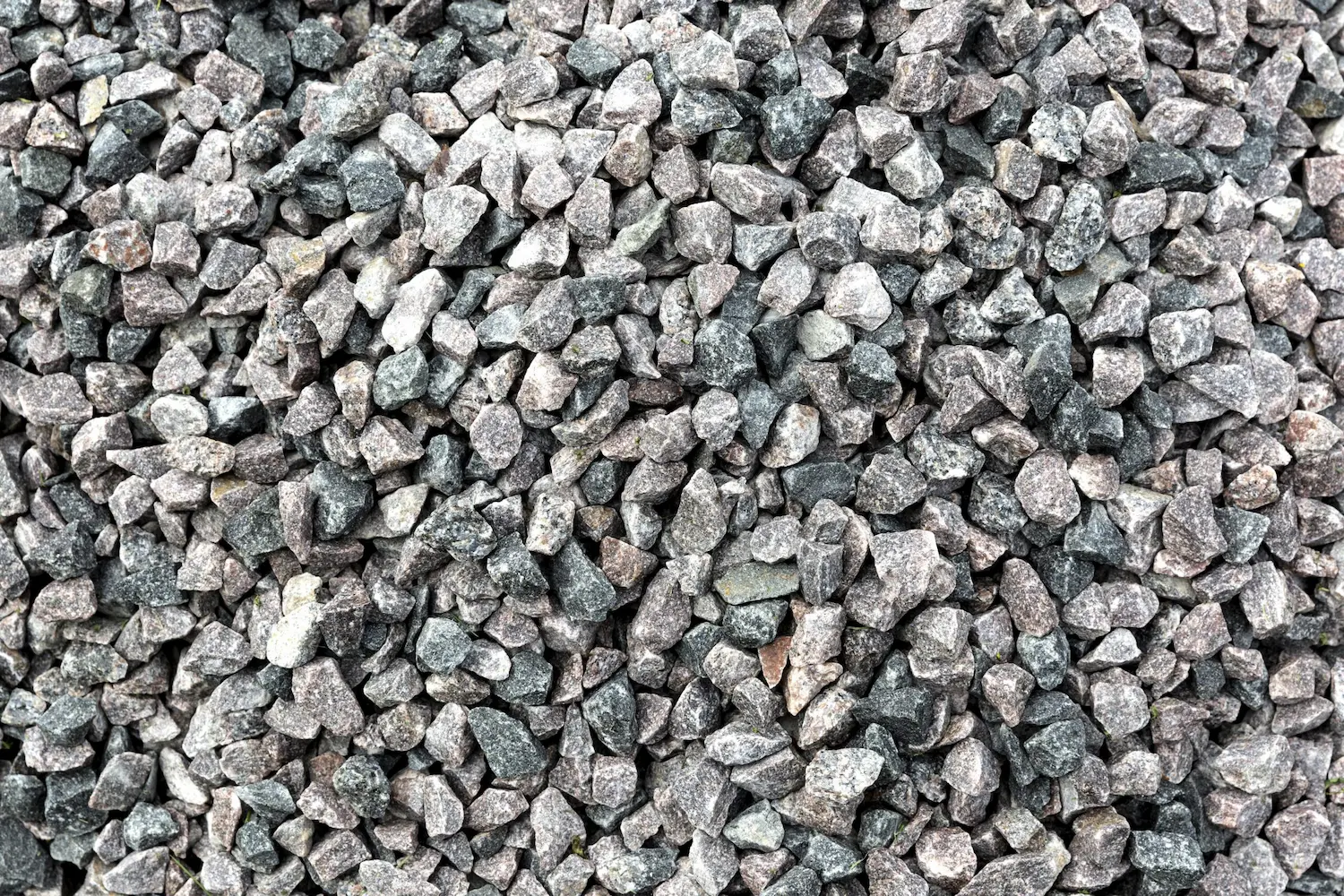
Clay
On the other hand, clay does not provide the best drainage so if you live in a wet area and want to use clay, it’s important that we slope your drain away from the face of your retaining wall so that it can drain correctly. Alternatively, we can slope it to the left or right so that it drains to one end or the other. In very rare cases, we can install a drainage system underneath the wall, however, this can lead water to gather underneath so we tend to avoid this method. If there is no other drainage method, we can install a drain far enough behind the wall blocks. Whatever method we agree on, our goal is to always prevent erosion and the build up of sediment in your drain.
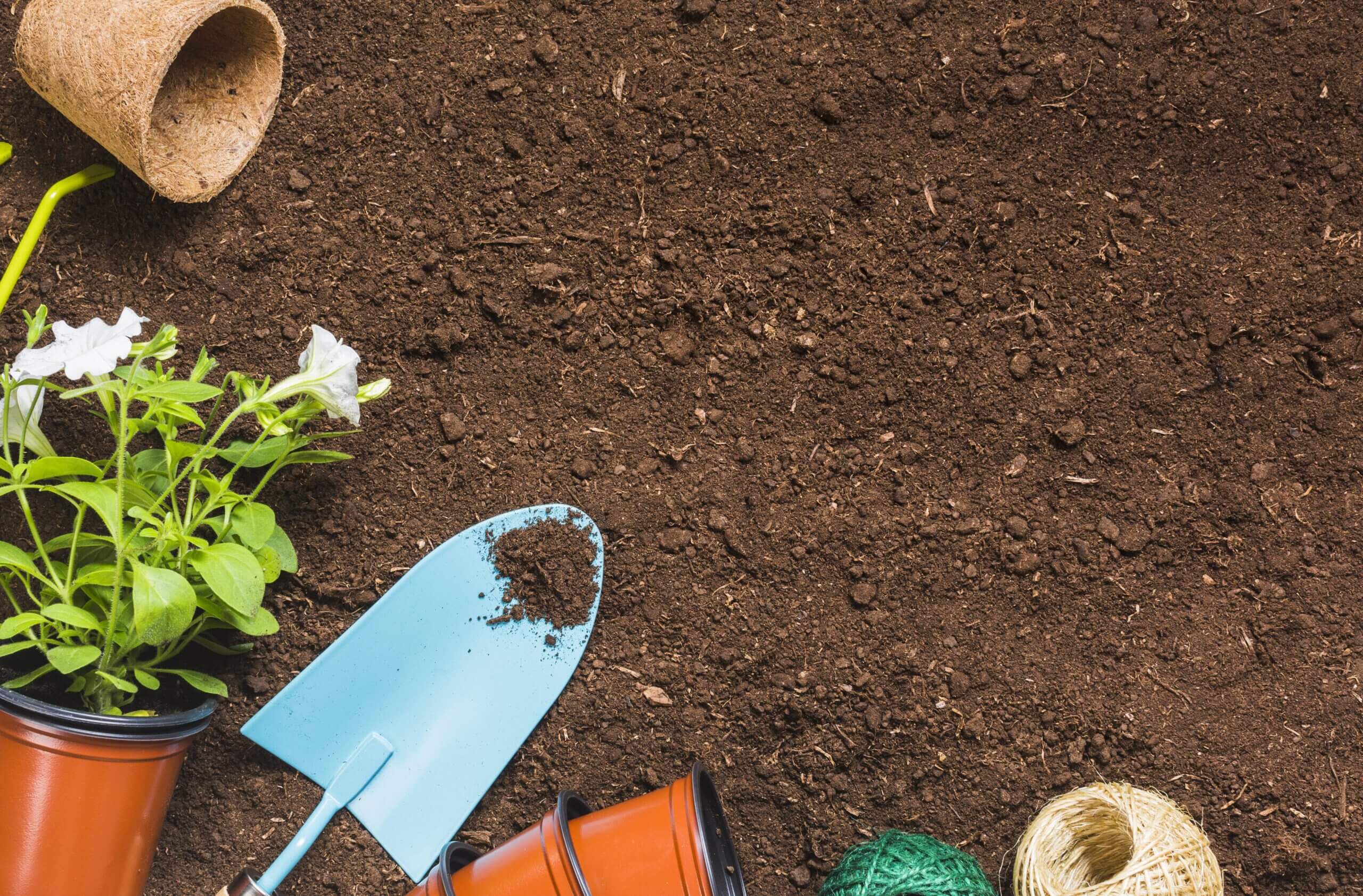
Soil
Soil can be a challenging material to use for the base of your retaining wall. That said, there are some instances where it can be useful. At New Life Rockeries, we use soil under the following circumstances:
-The building area has been untouched for decades
-There is an existing slope facing the wall
-We are building a short wall with less weight
-The lawn has been there for decades and slopes away from the wall face, making it great for drainage
While we do install retaining walls on soil in the circumstances above, we try to avoid this wherever possible, opting for bases like concrete and gravel instead. This is because, over time, if we install a wall on soil instead of concrete or gravel, the bottom section of the wall will absorb more weight, leading the retaining wall to lose its integrity and sag.
Many other contractors use sand and silt as a base for their walls. These can clog more easily, causing drainage issues along the way. We prefer to use clean materials that are compacted to create an even and level base to install your wall. These clean materials are essential to the foundation of your wall and its future integrity.
Our promise to You Regardless of the Base materials used
Whether we use gravel, crushed stone, concrete, soil, or sand, or any other material, we create all of our walls on a slope for optimal drainage. Moreover, we will ensure that the front face of your your wall will have sufficient stable ground in front of it to maintain its integrity and prevent erosion.
Last but not least, if the slope is steep, we will check that there are at least a couple of feet of strong ground in front of your retaining wall to ensure its durability. Above all, we promise you a wall that lasts, with a good draining system for water, that is the correct number of feet away from other structures, and that keeps the slope of your garden in mind for best results.
We Plan Stone Placement
Stone placement is essential to the integrity and structure of your retaining wall. Of course, we will ensure that the base of your wall is wider than the top, using larger stones on base course in order to lay a solid foundation. We will also use large stones behind the base course, spreading the weight of the bottom course to lay the foundation for the first course and final course.
Above everything, we will make sure that your wall blocks are level in order to maintain a high level of structural integrity. We will never use flat stones that slope towards the front edge of your wall nor will we use flat stones that slope towards the back as this will prevent holes and collapses.
At New Life Rockeries, each of our walls are created by our best contractors. We will plan every square foot of your wall with beauty, structure, and longevity in mind so that you can rest assured knowing that your wall will stay with you for years to come.

We Set Up & Level the First Layer of Stone
Once the base layer is installed and we have chosen and organized the stones, we will work on building the first course of your wall. During this stage, we will use a line level to ensure that the wall is built evenly. We’ll then brush of the first course of the wall before moving onto the next one to ensure that second course is in alignment.
We Set Up Your Drainage System
Drainage is one of the most important elements when it comes to installing a retaining wall. That’s because stone retaining walls can quickly tumble and fall if they’re met with pressure from excess water and sediment. With this in mind, we set up your drainage as soon as we have your first course and second course stacked.
Once we have laid down your first and second course, we backfill the stone retaining wall with rock. Then, we place perforated drain tile on top of the rock and use drain tee fittings and a drain grate every 20 feet to 60 feet depending on the amount of rainfall you expect in your region. We’ll then screw the drain tiles together so that they stay together during the rest of the construction process.
We Protect Your Wall With Backing
There is one force of nature that can always bring a stone retaining wall tumbling down if it is not built well: Rainfall.
Over time, water accumulates behind your wall, and while this should not cause any harm, the sediment and debris it brings with it can. When the backing of gravel and earth become clogged up, the ground materials can leak through the spaces of your wall’s stones. This can cause instability, whereby your wall starts to move inwards into the unstable ground. If it moves outwards, the wall could lose strength, collapsing altogether.
Luckily, you won’t have to worry about rainfall because we will back your stone retaining wall with landscape fabric known as geotextile. This will cover the entire backside of your wall and let the water flow through without letting solid materials pass. This landscape fabric will keep your wall clean while not disturbing the new structure that our team has created for you.
Common Mistakes to Avoid When Creating a Stone Retaining Wall
Retaining walls come with their own sets of complications and potential setbacks when not built correctly. At New Life Rockeries, we aim to avoid common mistakes wherever possible thanks to our team of licensed and highly trained experts.
Here are some of the most common mistakes seen in DIY or badly built retaining walls:
- Not completing drainage preparation before placing a drainage tile
- Placing base stones too deep under levels of finished landscape
Both of these common mistakes are major issues when it comes to draining water. And, as we now know, water is among the biggest issues that we see in our line of work. So, with the above in mind, don’t play the guessing game when it comes to your retaining wall. Hire our expert team today and we’ll have your retaining wall up and ready for you to admire in no time!
Why Choose New Life Rockeries to Build Your Retaining Walls
Satisfaction Guaranteed
Every square foot of each retaining wall that we build is designed to stand the test of time. We promise all of our customers 100% satisfaction and, if for any reason you’re not satisfied, we’ll stay with you until you are. We’ve worked with dozens of different types of stones and have created hundreds of retaining walls in the Pacific Northwest. Our expertise is unmatched in the region and this shines through in every project we take on.
Transparency Every Step of the Way
We treat every one of our customers the same way: With the utmost transparency and honesty. We will never take on a project that is unrealistic and we will tell you about potential obstacles before we start the work so that you go into your project with open eyes. In fact, we offer a free consultation whereby we come to your home to evaluate the terrain and give you a full overview of what the project will entail, how long it will take, and more, so that you have all of the details about your retaining wall first hand, from the experts.
Quality Work at a Fair Price
While we can provide you with a basic quote on the phone, our consultation allows you to give you a more concrete retaining wall cost so that you’re never left with a bill that wasn’t what you expected. Moreover, we give you the time you need to discuss your project with your partner and even compare quotes from other companies. When it comes to working with us, the ball is in your court. You’ll never be badgered by pesky salespeople, nor will you ever feel pressured to accept our proposal if it doesn’t feel right with you – That’s how confident we are in our work and the prices that we offer.
Open Communication & Honesty
If you have any questions we’re here for you. If we face any unforeseen issues, we’ll tell you. We believe in open communication and honesty which is why we’ll never keep you in the dark about your project.
Quality Materials
All of our retaining walls are made with the highest quality materials designed to withstand even the harshest weather conditions. We build each wall with the best base material, landscape fabric, gravel base, railroad ties, and stones possible. Moreover, we do our best to reduce our carbon footprint wherever possible by sourcing our stones and boulders from local quarries.
Which Retaining Wall Blocks Should You Choose?
At New Life Rockeries, we pin together rocks from local quarries, making it easier for us to cut the blocks to suit your desired design. These types of retaining wall blocks are also easier for us to cut, curve, and stack. And, above all else, they’re less likely to crack, ensuring that your natural stone retaining wall is durable.
Extra Tips for Building a Stone Retaining Wall That Will Last
Building a retaining wall involves choosing the correct materials, preparing the terrain for the build, and hiring the most qualified experts for the job. Without one of these three factors, you’ll end up with a wall that will last you a matter of months rather than years.
In addition to the above, there are other, more precise factors that can determine the strength, structure, and longevity of your wall. We go into more detail below:
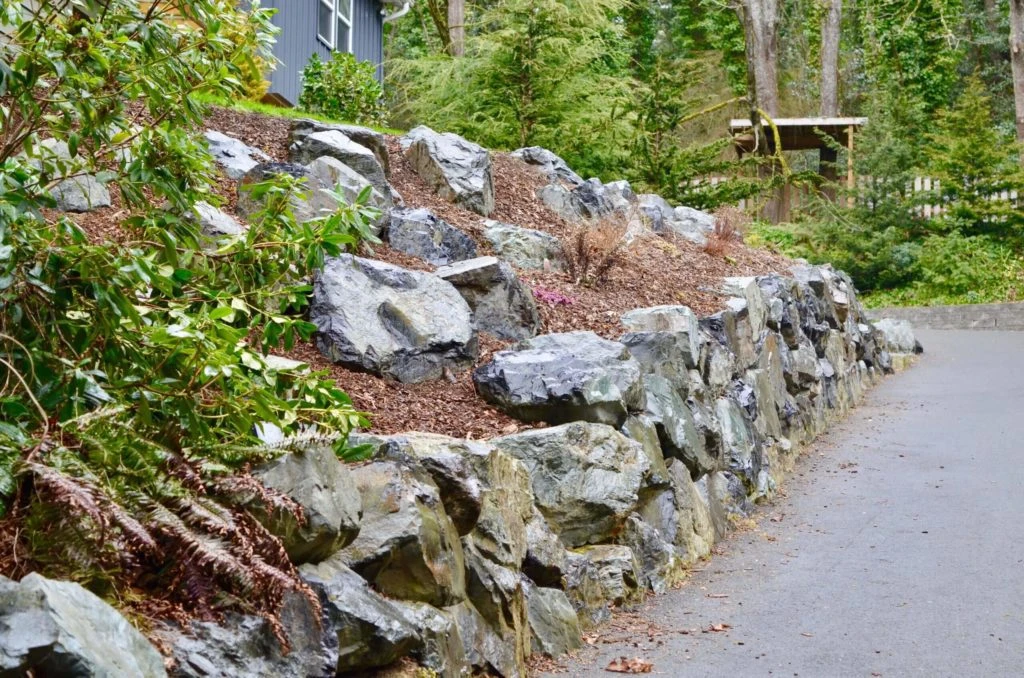
- Choose the Best Stones for your Wall
The best type of stone for your wall will depend entirely on the type of wall you want, its location in your garden, and the height you would like it to be. Before we take on a new project, we will meet with you to get a feel for the vision you have in mind. This is the point where you tell us about your dream wall so that we can help make it a reality.
If, for any reason whatsoever, we have reservations or concerns about the types of stones you would like to use, we will tell you straight away. For example, if you want a six foot tall wall made of boulders, we may face some obstacles along the way. As we mentioned above, we operate with the utmost honesty and transparency. Our goal is to always make sure that you go into a project with open eyes and clear and realistic expectations.
How Much Does a Retaining Wall Cost?
Slate Retaining Wall Cost
When creating a stone veneer retaining wall, we start by building a concrete block wall. We then stick natural stone to the surface of the wall. The process is similar to when using tile. Stone veneer retaining walls cost anywhere between $40 and $95 per square foot. Because of their concrete base, stone veneer retaining walls vary hugely in length and number of square feet.
Stone Retaining Wall Cost
Stone retaining walls typically cost anywhere between $2,000 and $12,000 or $10 to $100 more or less per square foot. This will of course depend on the size of your wall and the type of stone you would like to use. For example, while natural stone walls and gabion retaining walls start at approximately $10 per square foot, boulder retaining walls start at $25 per square foot. A stone retaining wall will range from $20 to above $400 per linear square foot depending the finishing, the types of block stone used, and the construction method we have to adopt according to your terrain. The best way to get a clearer estimate for your retaining wall is to give our company a call today. Our friendly team will be happy to answer any questions you may have.
Boulder Retaining Wall Cost
Because boulders are larger and more uneven they require more equipment to move and more expertise to install. With this in mind, these types of walls can cost anywhere between $25 and $80 per square foot. These walls do take up more space, however, they’re rarely taller than four feet. Boulders retaining walls come with their own unique set of pros and cons. While the property does require space for a mini excavator, boulders don’t require concrete to install. Because they leave a lot of empty space, they also don’t require any additional system to drain water as it will pass naturally between the large gaps.
Dry Stack Stone Retaining Wall Cost
Dry stack retaining walls also cost a little more than natural stone ones. They typically range between $20 and $100 per square foot depending on the local availability of the type of stone you would like us to use. The reason dry stack walls tend to be more expensive is because they take considerably more time and expertise to build. Each block must be as level as possible before we can create a new layer. That said, our customers often comment on how worth it they are from both a time and wall cost perspective because of the aesthetic appeal they offer.
Slate Retaining Wall Cost
Extremely resistant and ideal for creating a dry stack retaining wall, slate is a beautiful material that can seriously boost your curb appeal. Typically, a slate retaining wall cost is between $40 and $100 per square foot. Customers requesting this type of material usually would like a retaining wall ranging from two to three feet in height. The cost depends on the type of slate you would like us to use. Slate ranges in color from grey to brown, and even slight shades of blue.
Limestone Retaining Wall Cost
Limestone retaining walls are beautiful features, popular in terraced gardens and for building stairs. The retaining wall cost varies between $30 and $70 per square foot. They tend to cost more than concrete retaining walls because they are dry-stacked and, therefore, require more time and expertise to build.
- The Foundation Is Everything!
The base material we use can literally make or break your retaining wall. While we always recommend broken up stones or a gravel base for proper drainage, there are instances where soil or sand, for example, are the only alternatives. Whatever the project, we will choose the best materials possible to ensure the longevity of your wall.
Additionally, we always use a plate compactor to ensure that we have a level ground on which to build your retaining wall.
- Prevent Wobbles
A wobbly wall is a bad one! Our goal as your trusty retaining wall company is to make sure every square foot of your wall is not only built on a solid foundation but, that every course of stone is laid in a level, secure, and precise way. Aside from assuring proper drainage, the position of each block will dictate the quality, longevity, and durability of your wall.
At New Life Rockeries, we use shims to prevent the stones from moving. These stone wedges help prevent the rocks from moving so that the integrity of your stone wall is not compromised.
To find out more about our services, or to compare quotes, give us a call today. Our team of qualified experts can help turn your house into a home, one block at a time!
- Don’t Skip Drainage
Proper drainage is another important factor when it comes to your stone block wall. Without the correct system to drain water, your wall will experience significant amounts of wear and tear, leaving it exposed to natural forces that could actually bring it crumbling down before you know it.
Whether we use stones, gravel, sand, or soil, we will make sure to set up the correct system in the foundation or mortar of your wall to drain water and prevent unnecessary stress on your new wall. We will check that each course is laid properly to reduce the risk of any nasty surprises. And, above all else, we will use landscape fabric on the back of your wall to keep it sturdy for years to come.
- Attack Multi-Tired Walls Differently
- Stagger Joints & Make Sure They’re Tight
- Match Your Wall to Your Landscape
Last but not least, design a wall that will stand the test of time in your garden. It should match or complement your home and any other structures you have in your garden. Building something too different or that does not complement your current hardscapes will leave you with a piece that you get bored of very quickly. Your personal taste will determine the type of wall you would like, however, our team of landscape contractor designers can help you make a final choice if you’d like our input.




